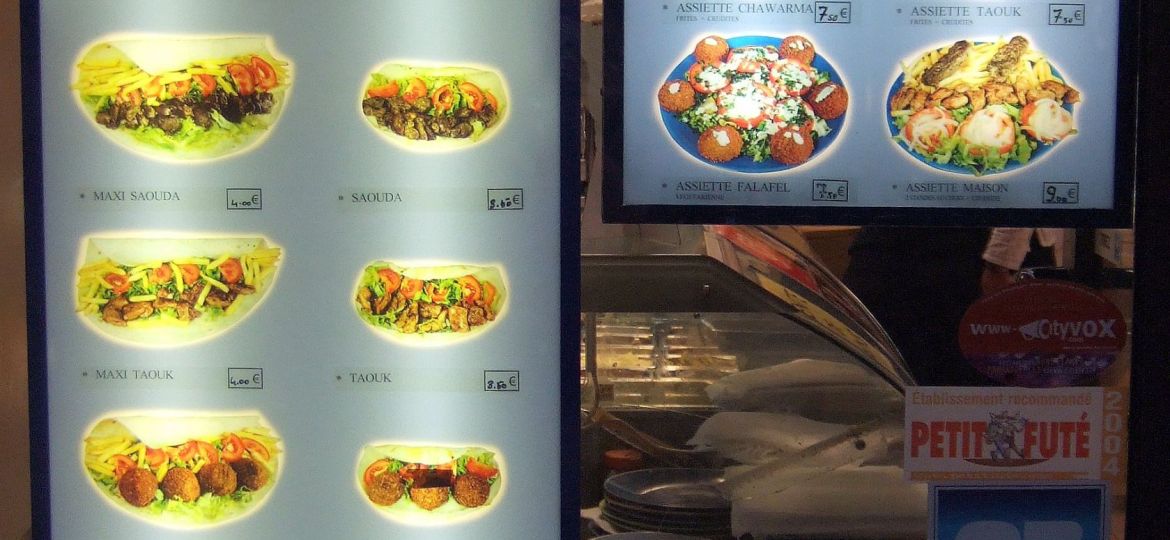
From AI-driven content to augmented reality experiences, the next generation of digital menus is transforming the dining experience as we know it. Add to this the growing emphasis on sustainability, with energy-efficient LED technology leading the charge and it’s clear that digital menu boards are more than just a passing trend. But how can you make the most of them for your restaurant or eatery?
Keep it clear and simple
- Use easy-to-read fonts
- Maintain high contrast between text and background
- Limit the number of items per screen (5-6 is ideal)
Use high-quality visuals
- Invest in professional food photography
- Incorporate appetising video content
- Ensure images are high-resolution and properly sized
Implement dynamic content
- Rotate menu items based on time of day
- Display limited-time offers and promotions
- Update content regularly to maintain customer interest
Optimise for readability
- Place important items in the “golden triangle” (the top left area of any visual content)
- Use larger font sizes for key information (item names, prices)
- Incorporate white space to prevent clutter
Ensure brand consistency
- Use your brand colours and fonts
- Include your logo strategically
- Maintain a consistent design across all screens
Make the most of data and analytics
- Track sales data to inform menu placement
- Use A/B testing to optimize layouts
- Analyse customer behaviour to refine content strategy
Include nutritional information
- Display calorie counts where required by law
- Highlight allergen information
- Showcase healthy options
Incorporate interactive elements
- Use QR codes for additional information or ordering
- Implement touchscreen and sensor capabilities where appropriate
- Consider augmented reality features for a unique experience
Don’ts
Don’t overload screens with information
- Avoid cluttered layouts
- Don’t use too many different fonts or colors
- Resist the urge to display your entire menu at once
Don’t neglect content management
- Don’t leave outdated information on display
- Avoid manual updates that can lead to errors
- Don’t ignore the need for a content management system
Don’t use low-quality visuals
- Steer clear of blurry or pixelated images
- Avoid stock photos that don’t represent your actual food
- Don’t use amateur video content
Don’t ignore accessibility
- Don’t use fonts that are too small or difficult to read
- Avoid colour combinations that may be challenging for colorblind individuals
- Don’t forget about viewing angles and screen placement
Don’t overlook technical aspects
- Don’t choose hardware that can’t handle your content needs
- Avoid systems without remote management capabilities
- Don’t neglect regular maintenance and updates
Don’t create distracting animations
- Avoid excessive movement that can be offputting
- Don’t use flashy transitions between content
- Steer clear of animations that detract from the menu items
Don’t forget about your audience
- Don’t ignore customer preferences and feedback
- Avoid using industry jargon or unfamiliar terms
- Don’t neglect to cater to your target demographic
Don’t underestimate the importance of testing
- Don’t skip thorough testing before launch
- Avoid assuming one design works for all locations
- Don’t ignore the need for ongoing optimization
Remember, the key is to keep digital signage content fresh, relevant and visually appealing while always prioritising clarity and ease of use for your customers.
